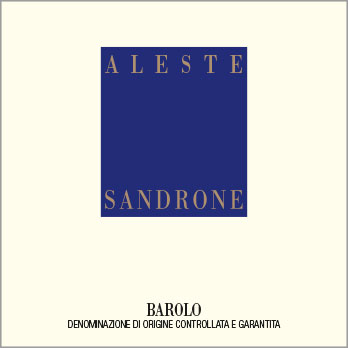
- Barolo DOCG
- 100% Nebbiolo
- Spontaneous fermentation from indigenous yeasts
- Maceration and alcoholic fermentation in open steel tanks
- Malolactic fermentation and ageing in French Oak tonneaux of 500 liters
- Aged in bottle for 18 months before release
- From the first vintage of 1985 Cannubi Boschis, from 2013 and beyond ALESTE
- Vineyard in the village of Barolo: Cannubi Boschis
- Alcohol: 14,%
- Recommended drinking time: 2025 - 2040
ALESTE Barolo 2018
Tasting notes
Aleste 2018 shows a more concentrated iteration of the vintage, reflecting the warm, sheltered, low altitude vines on the side of the famed Cannubi hill.
On the nose, the aromas leap from the glass, showing red and dark cherries and raspberries, with the spice notes so typical of Cannubi Boschis.
On the palate, the deeper concentration is also more closed than in its brother the Le Vigne, showing grippy, mature tannins that will require a few years to soften up and integrate fully.
The finish exhibits good freshness and long silky tannins.
Ratings for the vintage 2018
Aperitif 92 points
BOTTI.NO 95 points
Dagens Naeringsliv 92 points
Falstaff 97 Punkte
Gambero Rosso 2 bicchieri rossi
Gardini Notes 97 points
I Glasset 94 points
Kerin O'Keefe 93 points
James Suckling 94 points
VITAE 4 viti/94,5 punti
Vinous 94 points
Weinwisser 18+-18.5/20 Punkte
The Wine Advocate 96 points
Wine Enthusiast 93 points
Wine Spectator 94 points
Wine&Spirits 96points
Wines Critic 97 points
Evolution of the vintage 2018
After the sweltering 2017 season, 2018 began with good winter snow and spring rains that helped replenish the dry ground. The wet weather continued into April, complicating the final vineyard work somewhat and resulting in a slightly later bud break.
Flowering was under normal conditions. In our growing area, the beginning of the summer was characterized by occasional downpours that led to high humidity conditions. Much care had to be taken to achieve a healthy vineyard as Peronospora ran rampant when left unchecked by regular and judicious applications of the correct treatments.
Green harvesting became necessary for nearly all varietals in order to bring fruit production to the highest possible potential quality. Judicious vineyard work was required for maximum balance and equilibrium at harvest. Development of the fruit was gradual during the summer, with temperatures rising considerably from mid-July on, and a long period of constant fine weather helped the grapes to ripen without and early harvest.
The harvest period was normal in relation to the previous, precocious vintage and quantities in general were slightly higher than had been the norm for the previous vintages.
In conclusion, we can say that it was a medium-bodied vintage in the traditional mold, which demanded the utmost attention of growers in vineyard management; significantly more hand-work in the vines was required for maximum results. In the end, the outcome was better than had been expected at the beginning of the campaign.
Harvest took place from October 10th until 18th.